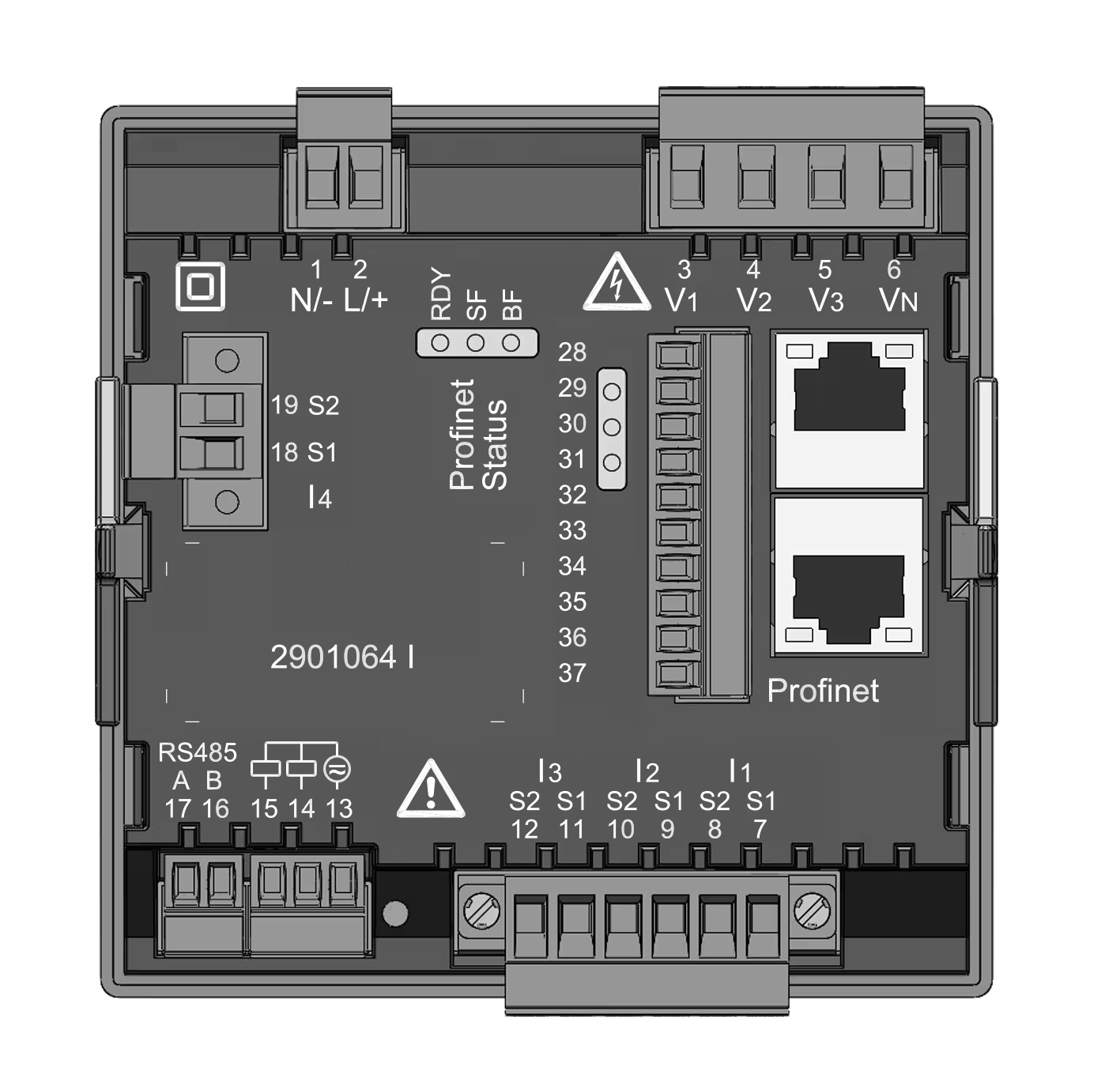Technical details
Item no.: see product variants


Drawings

Data at a glance
Certifications
- productCertifications.ul
Residual current inputs
2Harmonics V / A
1st – 40thActive energy class
0.5S (…/5 A)Digital inputs
*Digital / Pulse output
* / 2 pulse outputsInterfaces
- RS485
- Ethernet
Protocols
- productProtocols.modbusRTU
- productProtocols.profinet
Product variants
Functions and features
Stromkanäle
- Strommesskanal Phase L1
- Strommesskanal Phase L2
- Strommesskanal Phase L3
- Strommesskanal Neutralleiter (N messen / Überlastung)
- 2 x RCM (wahlweise Temperatureingang)
Schnittstellen
- 2 PROFINET-konforme Ethernetschnittstellen und integrierter Switch zum Aufbau von Linientopologien
- Zusätzliche RS485-Schnittstelle
- 2 digitale Ausgänge (Impulsausgang, Schaltausgang, Grenzwertausgang, Logikausgang)
- Zusätzlich 3 digitale Ein-/Ausgänge
Rest-Schnittstellen
- Software-Schnittstelle zur Abfrage von Messwerten und Konfigurationsparametern über HTTP-Protokoll, z.B. zur Einbindung der Messdaten in übergeordnete Softwarelösungen (GLT, SPS, SCADA,...)
- Maschine-Maschine-Kommunikation durch einfaches Architektur-Modell
RCM (Differenzstrom)
- Brand- und Geräteschutz
- Anlagensicherheit
- Erfüllung von Vorschriften
- Identifizierung von Isolationsfehlern
- Anlagenverfügbarkeit sichern
Webserver
- Echtzeit-Darstellung der aktuellen Leistungs-/ Strom- und Spannungswerte über die Gerätehomepage
- Gerätehomepage jederzeit über den Browser abrufbar
- Darstellung der Online-Messwerte
Gridvis®
- Visualisierung und Auswertung der Messwerte
- Einfache Erstellung von Reporten
- Aufbau von Energiemanagement-Systemen nach ISO 50001
